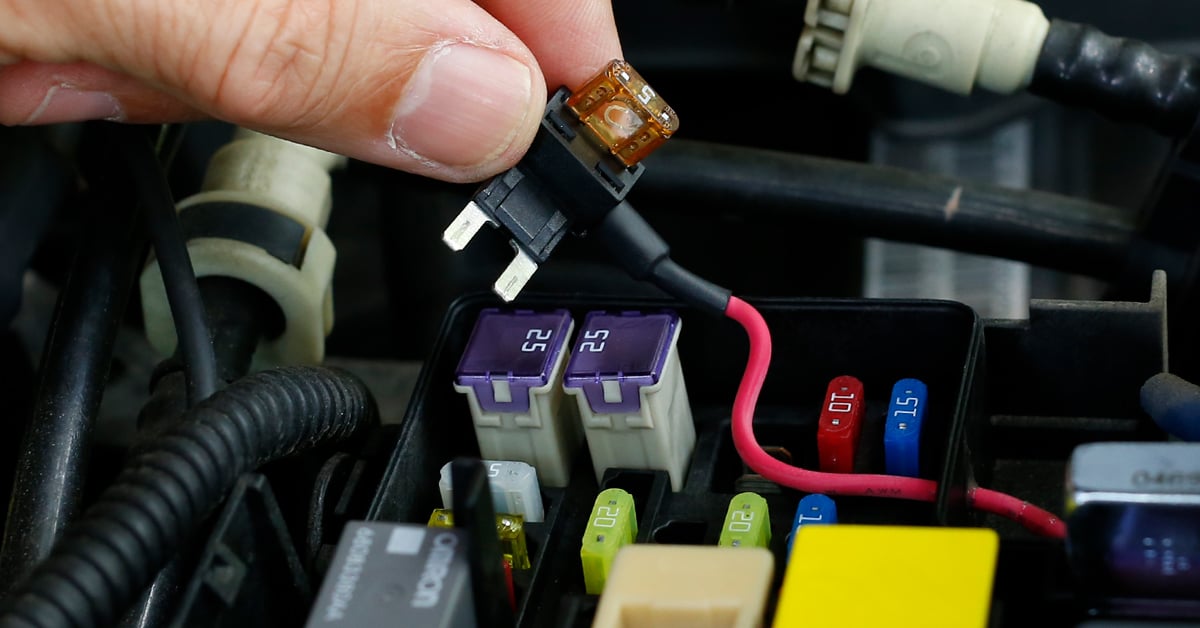We know how much important to protect all the wires and appliances. In this case, the backup fuse is here to the rescue to solve your problem.
Let’s see what does the ”backup” fuse do?
The backup fuse protects from short circuits. It reduces the risk of transformer failure. It also increases cable safety and capacitor safety. It works as shielded motors and protects measures for low-voltage starters. Finally, This fuse safeguards both transformers and semi-conductors.
Details are a must to read for precise acknowledgment. So, without further ado, let’s get started-
Usage of Backup Fuse
You wanna know what is the function of back up fuse? Well, there are multiple usages of backup fuse which you aren’t aware of. Let’s find out some of the vital roles that backup fuses play.
Protects from Short Circuit
A backup fuse is required for all starters of motors. Can fuses drain car battery? Absolutely Not. The thermal relay system is solely intended to guard against overloads. This is why it is so sensitive but it’s not harmful.
Overload relays, owing to their intrinsic functioning mechanism. It takes longer to open a motor circuit in the event of a sudden short circuit.
Due to the large in-rush of short-circuit current, such delays will cause significant damage. That is to the starting motor and the circuit it is linked to.
Have you utilized fast-acting, high-rupturing-capacity fuses in the motor circuit? Well, it activates more quickly and opens the circuit, helping to prevent this.
Back-up fuse protection is most often employed. That is when another circuit’s primary protection does not adequately safeguard the provided circuit.
The backup fuse enables us to manage the highest capacity in an electric circuit. In the event of a fuse wire meltdown, electrical circuit continuity is lost.
This prevents short circuit damage and destruction of the electronic equipment in that circuit. Backup Fuse wires are often constructed of a tin-lead alloy.
Reduces Risk of Transformer Failure

The Backup Fuse reduces the danger of a transformer failure that might be disruptive. Designed for wind farm transformers and distribution transformers ranging from 26.4 to 34.5 kV.
Over half of the loads it feeds are linked through a main or secondary delta connection. This backup fuse considerably minimizes the amount of fault energy.
It provides a high interrupting capacity to guard against ever-increasing available fault currents. Because of the decreased fault energy, the arc-flash potential is also reduced.
An appropriately sized, low-current protection device must always be connected in series with the backup fuse (MVI). There is fault protection for a certain range of currents with both devices.
A failure outside the transformer inside the transformer may occur. In this case, the expulsion fuse or MVI may be utilized to clear the system of low-magnitude currents.
These are often lower than the backup fuse’s minimum interrupting current rating. Clear any other currents. Even those caused by low-impedance faults in the transformer. Use backup fuses.
The most essential thing to remember is to keep the amount of energy coming from the problem source.
And this is to a level that the transformer tank can handle. As much as 50,000amps of symmetrical fault current may be stopped by the backup fuse.
In order to minimize arcing time and fault energy, smaller backup fuses may be employed. It is because of the L-L voltage rating on the backup fuse.
This feature, in addition to enhancing transformer safety, substantially enhances cooperation upstream.
Works as a Shielded Motors
High-voltage and low-voltage backup fuses are used with either air-break or vacuum contactors. It is to safeguard 3-phase AC induction motors up to 2 MW in several countries.
Short-circuit protection is provided by backup fuses, thus they must have enough capacity. Overload protection in motor starters removes the lower currents.
These situations do not need that the fuses’ rated current match to the motor’s rating. Rather, the choice of backup fuse is based on its capacity to survive the motor starting-current surge. This is generally 5–6 times the entire load.
Sometimes, backup fuses with a current rating up-to double the motor’s full load current are used as a consequence.
During start-up phases, these fuses are able to carry three times their rated current capacity. Backup fuse elements experience high temperatures.
That is much greater than those generated by continuous operation at their rated current.
Expansion and contraction of lengthy delicate components might lead to mechanical problems. That is after a few starts of the motor.
Because of this, the components of high-voltage motor fuses are corrugated. In order to reduce this impact and eliminate the need to choose fuses with even higher ratings.
Backup fuses’ components are more durable, therefore corrugation isn’t essential.
Protect Measures for low-voltage starters

As a result of the large start-up currents, the system’s power quality might be adversely affected. Star–delta, auto-transformer, and pole-changing motors are a few more options for assisting in starting.
There has been an ever-increasing usage of “electronic soft starts” since the introduction of inexpensive and dependable power semiconductors.
An anti-phase parallel arrangement of six soft starters is typical of contemporary soft starters.
The thyristors begin switching off huge portions of the supply voltage. Gradually it reduces this amount until the whole power is provided.
With a backup fuse in place, electronic soft starts are much like their electromechanical counterparts. In order to protect power semiconductors, special fast-acting fuses are needed.
Normally, backup fuses are installed in the supply lines that provide power to the input devices. The cyclic loading factor for the fuse is used to determine the current rating of the fuse. And that should be used in a certain application.
The safeguarding of transformers
Most step-up power transformers is used in combination with alternators in producing stations to create generators.
Such as transformer units, and step-down power transformers are used to link the major transmission networks in electricity systems.
Backup fuses on a transformer’s low-voltage side are often used to safeguard the load circuits. Which are linked to the secondary windings. There must be an appropriate fit between the characteristics of the backup fuses.
Due to the parallel connection of transformers, however, the lower-voltage networks are interconnected. It is necessary to choose backup fuses. This can operate under these circumstances while still protecting the loads.
Faults in a transformer’s high-voltage side must be isolated by fuses on the lower-voltage side. This must be done with the least amount of disruption to the system. And also without affecting the healthy components of the system’s supply.
Maintain Capacitor safety
One capacitor is typically installed in each phase of a low-voltage power factor correction system. Fuse makers often provide simple advice on how to safeguard these capacitors.
On the basis of service experience and taking into consideration high transient currents, probable harmonic content, and capacitor tolerances, these are recommended.
Simple wire components with the required low-current rating and breaking capacity are employed in the backup fuses.
A unit fuse should be activated if the unit it is attached to fails. Which will allow the rest of the bank to continue to function.
In the case of a failure, a backup fuse must be activated as rapidly as possible. That is to ensure the safety of the system. Load current and transient overcurrents are also carried by this device.
The latter occurs when the voltage across a bank suddenly changes. A circumstance that develops when the supply is connected. Or, when the network voltages are affected by a system breakdown.
Using backup fuses is frequently required to prohibit operation in this situation.
When a short circuit forms in a device, a discharge occurs, allowing power from the supply and other working devices to flow into the device. In this case, only the malfunctioning unit’s fuse should be able to provide power.
In case, you need to replace your capacity, here’re some good quality ones to serve you better.
Protects Semiconductor device

Current semiconductor devices have continuous current ratings of up to 15 kA. Peak reverse contains voltages of up to 7 kV, respectively.
Unfortunately, the gadgets still have inadequate overload capacity and need sensitive and fast-acting protection.
Manufacturers faced an entirely new challenge when they introduced semiconductor devices. These were previously protected by backup fuse elements.
It had similar properties to the metallic elements making it relatively easy to match the characteristics.
Because of their fundamental differences, it was more difficult to match the behavior of metal elements with that of semiconductors.
FAQs
What is a blue fuse?
Granulation is a historical method in which precious silver. Gold are fused together using a fusing substance called Bluefuse. Diffusion bonding may occur because it is a copper-based liquid. This lowers the melting point of silver and gold. It is not suitable for soldering sterling or fusing Argentium.
How do you tell if a fuse has gone?
The fuse must be removed from its holder. The fuse holder cap may need a tiny screwdriver to remove. Keep an eye on the fuses. As soon as you see an open wire or black or metallic spot inside of your fuse glass it’s time to replace the fuse.
What is the alternator fuse called?
Nonetheless, when someone refers to the “alternator fuse,” they’re most likely talking to the main. It elevates the fuse between the generator and the battery. The main alternator fuse, like any other fuse, serves as a circuit breaker.
Are there any other components protected by the “backup” fuse besides the backup lights and reverse camera?
The specific components protected by the “backup” fuse can vary between vehicles. While backup lights and reverse cameras are common, some vehicles might have additional systems related to reverse sensors or alarms connected to this circuit. Check your vehicle’s documentation for precise details.
What happens if the “backup” fuse blows or fails?
If the “backup” fuse blows, the backup lights, reverse camera, and other related systems will stop functioning. This loss of functionality can compromise your safety, especially when reversing, as other drivers might not be aware of your intentions.
Bottom Line
In summary, the ”backup” fuse, also known as the backup light fuse, plays a crucial role in the vehicle’s electrical system. It is specifically designed to protect the circuit that controls the backup lights, which illuminate when the vehicle is put into reverse. If this fuse blows, the backup lights will not function, potentially compromising safety, especially during nighttime or low-visibility conditions.
Replacing a blown backup fuse is a relatively simple task, usually requiring the appropriate replacement fuse of the correct amperage. Regular checks of this fuse and prompt replacement when necessary are essential to ensure that the backup lights operate effectively, maintaining both the vehicle’s safety features and compliance with road regulations.
Understanding the function of the backup fuse highlights its importance, emphasizing the need for timely maintenance to guarantee optimal lighting and overall safety on the road.
Hope you got the answer about what does the backup fuse do. Now, you may know it plays a vital role.
So, you know how it protects so many sectors that amaze us. Don’t forget to install a backup fuse.
Good luck!
Read also: EcoBoost Noise When Accelerating: Possible Problems and Solutions
- Ford Fusion Hybrid Battery Dead (Things to Understand) - September 17, 2022
- EcoBoost Noise When Accelerating (problems+Solutions) - September 17, 2022
- Ford Fusion Power Seat Problems (Here The Solutions) - September 17, 2022
